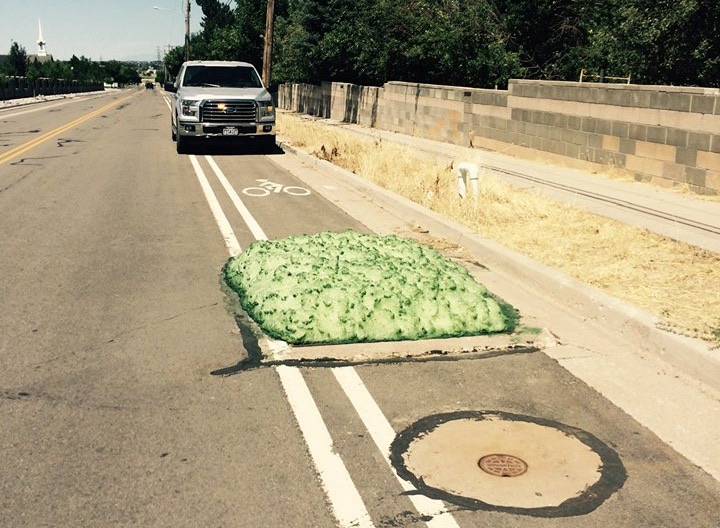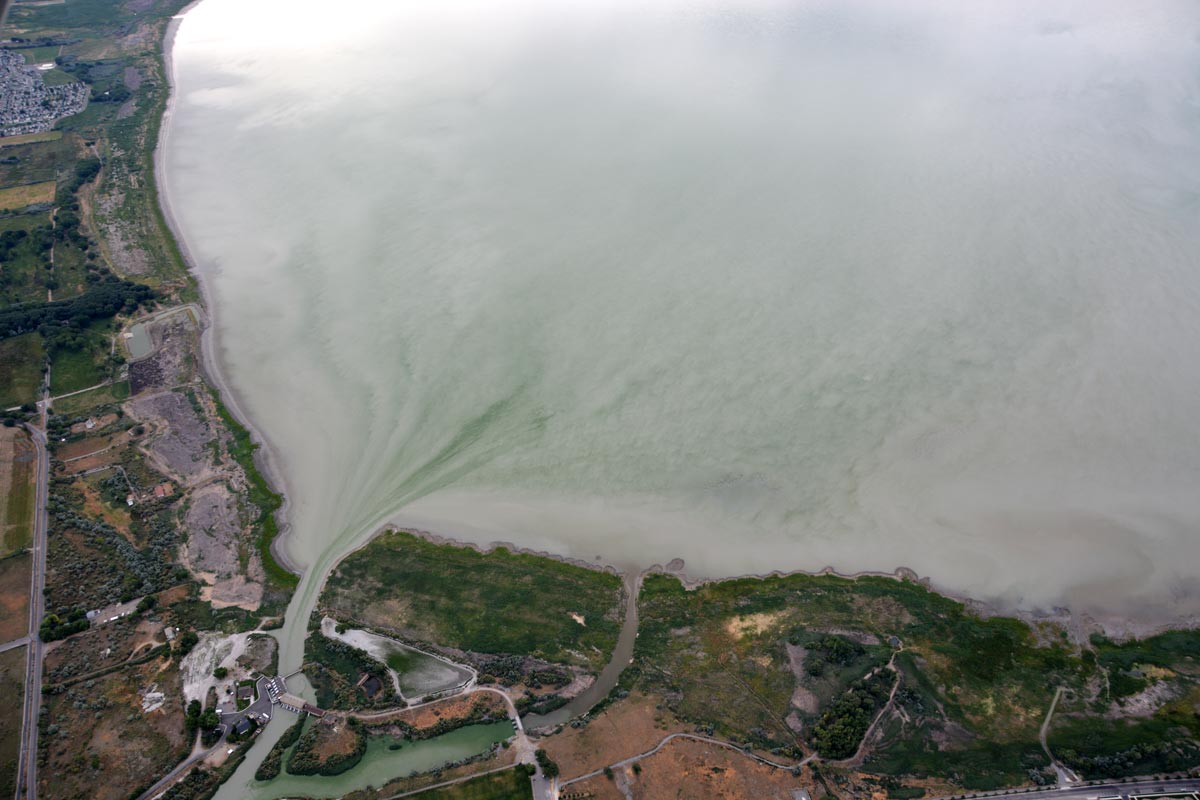Mysterious Green Foam Spews from Drain in Utah

This month has brought flora troubles to Utah, with a green foam bubbling through a street vent and a poop-fueled algae bloom covering the state's third-largest lake.
Residents in Bluffdale, Utah, located about 20 miles (32 kilometers) south of Salt Lake City, were shocked to find a green, foam-like substance coming out of a roadway drain on Thursday (July 21).
Bluffdale city officials were concerned that the mysterious green blob was related to the toxic algae bloom currently affecting the Utah Lake area, and called the Salt Lake County Health Department to investigate. [Stunning Photos: The Clearest Lake on Earth]
Though results of samples taken from the drain are pending, Nicholas Rupp from the Salt Lake County Health Department told KSL-TV that the foam most likely came from a nearby canal's recent moss treatment — and isn't related to the lake's slimy bloom. The chemicals used to clear canals of moss also foam up, Rupp said.
Donna Spangler, communications director for the Utah Department of Environmental Quality (Utah DEQ), told Live Science that the foam "has nothing to do with algae. ... It had something to do with an irrigation cleaning, and it was basically soapy moss."
The canal is connected to the Jordan River, which is connected to the recently algae-covered Utah Lake. The massive algae growth has, at its peak, covered 90 percent of Utah Lake and crept into surrounding tributaries, Spangler said.
Public officials have closed the lake due to concerns about cyanobacteria algae, which can release toxins that affect the brain, nervous system and liver function of people exposed to it, Dr. Joseph Miner, executive director of the Utah Department of Health, said in a statement.
Get the world’s most fascinating discoveries delivered straight to your inbox.
The bloom's growth is due to a combination of high temperatures, low lake levels and a higher concentration of phosphorus, which helps algae grow, officials said. Nearly 80 percent of the phosphorus in Utah Lake comes from discharge by nearby wastewater treatment plants, according to the Utah DEQ.
"It's coming from our waste, human waste — using the bathroom," Spangler said.
Though algae blooms occur naturally, human activity increases their intensity, frequency and scope, said Walt Baker, director of the Utah Department of Environmental Quality’s Division of Water Quality.
"Scientific evidence suggests that people cause increasing intensity of algae blooms by modifying hydrology and increasing nutrient inputs to our waters," Baker wrote in an Op-Ed for Desert News.
Both Baker and Spangler noted that in order to limit the concentration of phosphorus, wastewater treatment plants must be upgraded — an expensive task. But with consistently warmer temperatures worldwide, Spangler said there is concern that the algae bloom will become a more common occurrence, as the algae grow faster in warmer conditions.
Original article on Live Science.




